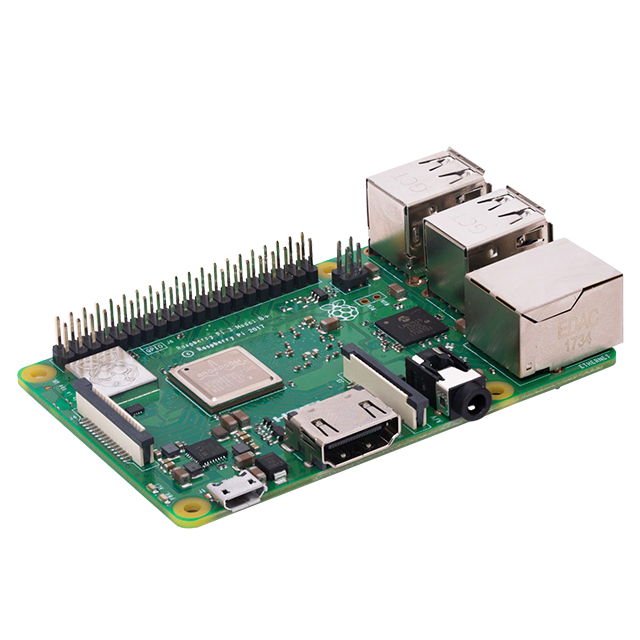Raspberry Pi 3 A+: The Final Pi of Its Kind
2018-11-16 | By Maker.io Staff
The Raspberry Pi Foundation has just announced their latest revision of the Raspberry Pi: the 3 A+. How is this computer different from previous machines? How will makers benefit from this revision?
The New Machine
When the Raspberry Pi first came out, users all around were left stunned and amazed at the credit card-sized computer that could run an OS with a graphical user interface and networking, all while providing GPIO support for interfacing with hardware. The foundation then released the Raspberry Pi A+, a Pi that had lower specifications—but at a significantly reduced size and cost. The A+ was well-received by the maker community and has found its way into many maker projects. Then technology progressed, and the Pi Foundation continued to release updated machines with quad-core capabilities, 1 GB of RAM, and integrated networking, but no matter how much the community demanded, there was no sign of a modernized A+. But the Pi Foundation has just announced their latest Pi, the 3 Model A+, which is a reduced-cost version of the latest Pi computer, the Model 3.
Included in the 3 Model A+ is the same Broadcom BCM2837B0, which has an ARMv8 Cortex-A53 64-bit quad core processor clocked at 1.4 GHz, 512 MB DDR2 RAM, 2.4 GHz and 5 GHz Wi-Fi, full 40-pin GPIO, and HDMI. However, to get the size (and cost) of the A+ reduced, the computer has half the RAM of the Model B 3+, only one USB 2.0 port, and no Ethernet port, but considering how most projects are going wireless (who uses Ethernet anyway these days?), these fewer features should not impact most projects (especially portable projects). The smaller size of the 3 A+ allows for the Pi to be mounted into smaller spaces. This also makes it more portable.
Check out the full specs for the Raspberry Pi Model 3 A+:
- Broadcom BCM2837B0, Cortex-A53 (ARMv8) 64-bit SoC @ 1.4 GHz
- 512 MB LPDDR2 SDRAM
- 2.4 GHz and 5 GHz IEEE 802.11.b/g/n/ac wireless LAN, Bluetooth 4.2/BLE
- Extended 40-pin GPIO header
- Full-size HDMI
- Single USB 2.0 ports
- CSI camera port for connecting a Raspberry Pi Camera Module
- DSI display port for connecting a Raspberry Pi Touch Display
- 4-pole stereo output and composite video port
- Micro SD port for loading your operating system and storing data
- 5V/2.5 A DC power input
One strong feature that professionals will definitely appreciate about the 3 A+ is the EMC compliance, in which it is compliant with Electromagnetic Compatibility Directive (EMC) 2014/30/EU and Restriction of Hazardous Substances (RoHS) Directive 2011/65/EU. This makes integrating the Pi into commercial applications significantly cheaper, and designers only need to concern themselves with their attached hardware instead of the Pi itself.
The Final Pi
While this computer has been met with praise from the maker community, it has also seen some sadness, as, according to the Pi Foundation, the Model 3 A+ will be the last Raspberry Pi in its current form. While the Pi has touched the hearts of many makers and professionals alike, the core of the Pi (which has largely remained unchanged) will need to be updated, as technology is continuously changing, and different processors or architectures may provide performance increases, power reductions, and even improve security. Future Pi computers could see more modernized hardware, including cryptographic or AI modules that could power the next big maker projects.

Have questions or comments? Continue the conversation on TechForum, DigiKey's online community and technical resource.
Visit TechForum









 中国
中国